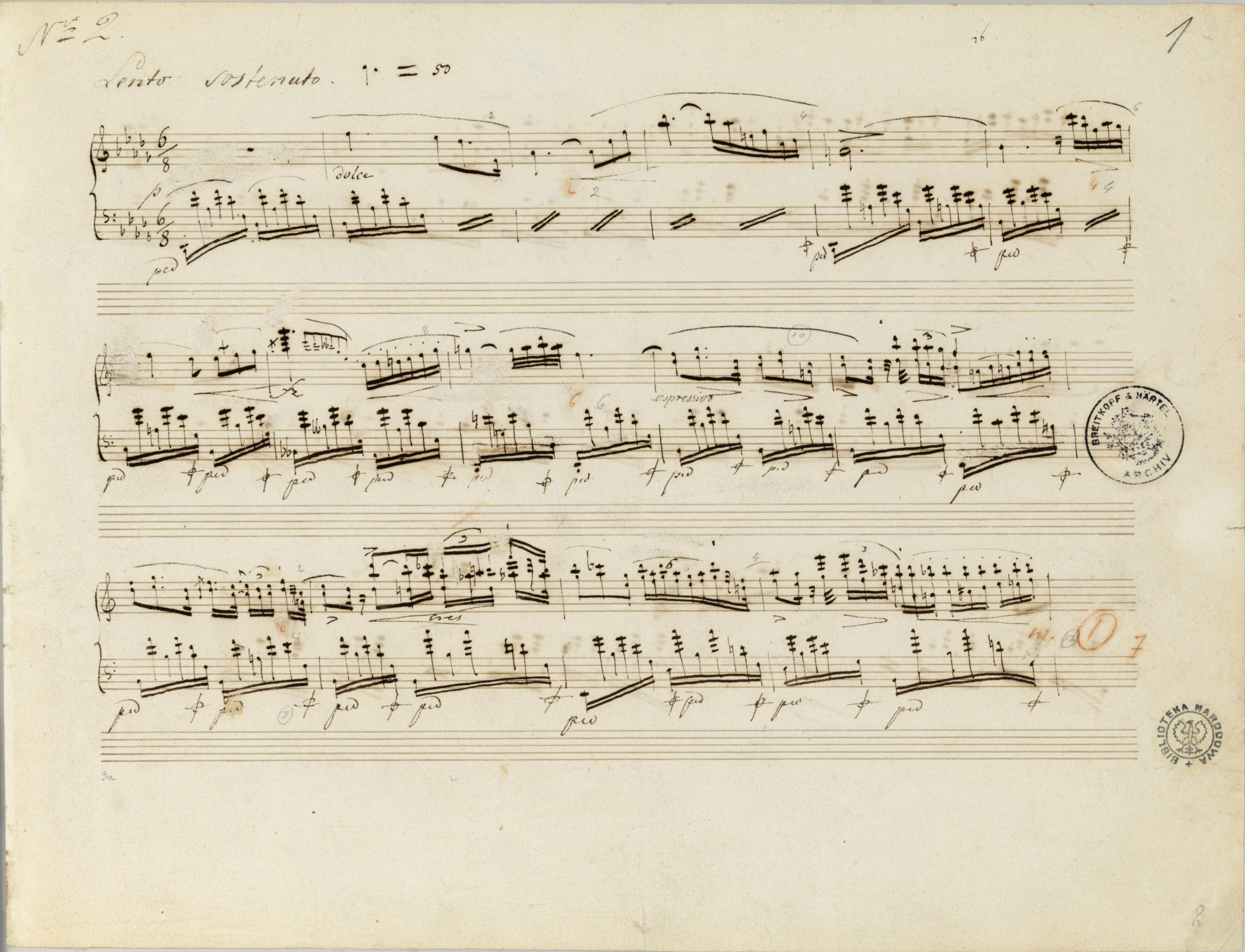Op. 2, Variations in B♭ major
Op. 10, 12 Etudes
Op. 11, Concerto in E minor
Op. 21, Concerto in F minor
Op. 22, Polonaise in E♭ major
Op. 24, 4 Mazurkas
Op. 25, 12 Etudes
Op. 26, 2 Polonaises
Op. 27, 2 Nocturnes
Op. 28, 24 Preludes
Op. 30, 4 Mazurkas
Op. 35, Sonata in B♭ minor
Op. 50, 3 Mazurkas
Op. 63, 3 Mazurkas
Op. 64, 3 Waltzes
(Op. 4), Sonata in C minor




Op. 27 No 2, Nocturne in D♭ major
Beginning from the sixth d flat2-b flat2, the four subsequent two-chord notes are written in A in the manner described in a remark to bar 11. Also here, the notation is surely not what Chopin ultimately intended to have, as he abandoned it when writing the subsequent two-note chords.
The reason behind the change of the initial one-part notation into a two-part one was probably the augmented unison a flat2-a2. Chopin learned on the example of earlier published works, Ballade in G minor op. 23 and Variations in B flat op. 12, that the single-voice notation easily led to ambiguities and errors (in the Ballade in bar 171 the note b2 in the 4th crotchet of the quintuplet was printed in FE w in such a manner that in GE (based on FE) it was allocated to the 5th crotchet; a similar misunderstanding must have also taken place in the Variations, in bar 110).
Compare the passage in the sources »
category imprint: Interpretations within context; Corrections & alterations
issues: Corrections in A
notation: Rhythm

